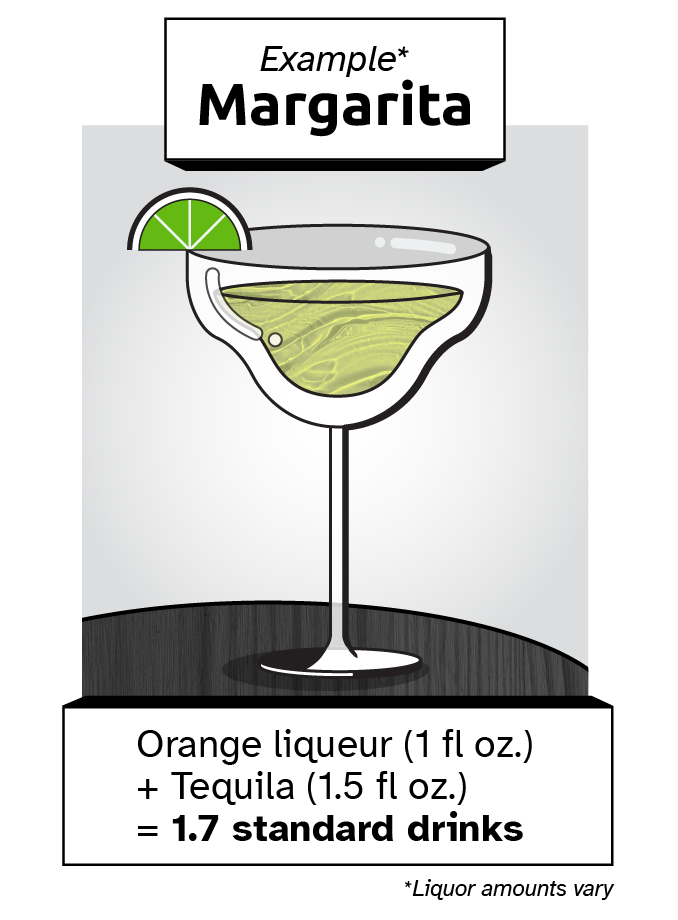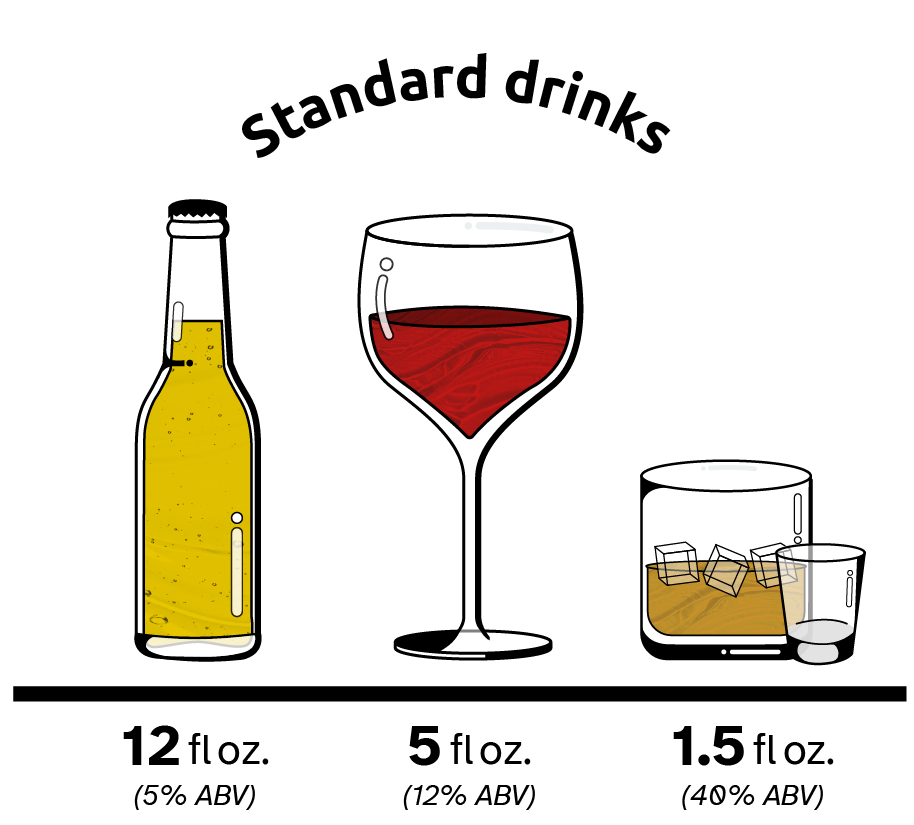How much alcohol is too much?
Underage drinking and alcoholism are serious issues, and we’ve gotten pretty good as a society at understanding the harm they cause. We’re less aware of other kinds of excessive drinking, like binge drinking and heavy drinking, and the problems that come with them. They’re also both fully legal and socially encouraged — so they have a way of sneaking up on you.
Do you know how much you drink in a week?
Let’s face it, it’s hard for most of us to know exactly how much we drink. But if you did keep track for a week, what would you learn?
Alcohol is a big part of our communities, and society tends to encourage excessive drinking. This can make it difficult to keep track of how often we drink alcohol. Watch how these people answer the question: How many drinks do you have in a week?
Excessive drinking includes binge drinking and heavy drinking.3
Excessive drinking can mean something different for each person depending on several factors such as age, types of medication we use, pregnancy, or gender. The CDC* offers two ways to think about it:
Binge drinking: measured by the clock
Heavy drinking: measured by the calendar
*Centers for Disease Control and Prevention
Binge drinking is when you have 4 to 5 drinks or more at a single time — at a party, restaurant, or at home on your couch.
Heavy drinking is when you have, on average, more than 1-2 drinks every night over the course of a week.
It’s not just about how much alcohol you drink before you feel drunk. It’s how it adds up – one night at the bar, over a week, or throughout the year. Over time, the risk of long-term damage adds up, too. Overall, drinking less is better for your health than drinking more. Drinking less lowers your risk for long-term health problems like cancer, heart disease, depression and alcohol use disorder (AUD).6
What does gender have to do with it? The CDC numbers are different for men and women because bodies process alcohol differently. You can read more about that here. However, it’s important to point out that the CDC numbers refer to cisgender males and females. “Cisgender” means that the gender you identify with matches the sex assigned to you at birth. When it comes to gender diverse individuals, more research is needed to assess the impact of excessive drinking.
It's also true that for some people, drinking any alcohol is too much.
What’s the difference?
Binge drinking: for a man, 5 or more standard drinks in one setting or occasion; 4 or more drinks for a woman
Heavy drinking: for a man, 15 or more drinks per week; 8 or more drinks for a woman
All drinks are not the same.
Different types of beer, wine, and liquor have very different amounts of alcohol content.
For example, a mixed drink like a martini or a Long Island iced tea that has no or only a small amount of non-alcoholic “mixer;” higher-alcohol beers such as double and triple IPAs7; tallboy (16 oz.) beers; or beers served in tall concession-style cups at sports events and concerts — all of these would count as more than one standard drink.
Use these calculators to find out how much alcohol is in common drinks:
What is a “standard drink?”8
12 fl oz. beer (5% ABV)
5 fl oz. wine (12% ABV)
1.5 fl oz. liquor/hard alcohol (40% ABV)
Percentages shown are average ABV for those types of drinks. ABV means alcohol by volume. Certain beers, wines and liquor have higher ABVs, which means one serving of them would count as more than one drink.
Excessive drinking is something a lot of us do.
Did you know it can lead to alcohol use disorder?
The number of Oregon adults who drink excessively is more than most of us realize: More than 1 in 5. The consequences are bigger, too. Most people in this group are not affected by alcoholism or alcohol use disorder. But, by drinking excessively, you may increase your risk of developing an alcohol use disorder later in life.
Consider cutting back
Check out how you can track your drinking or drink less.













